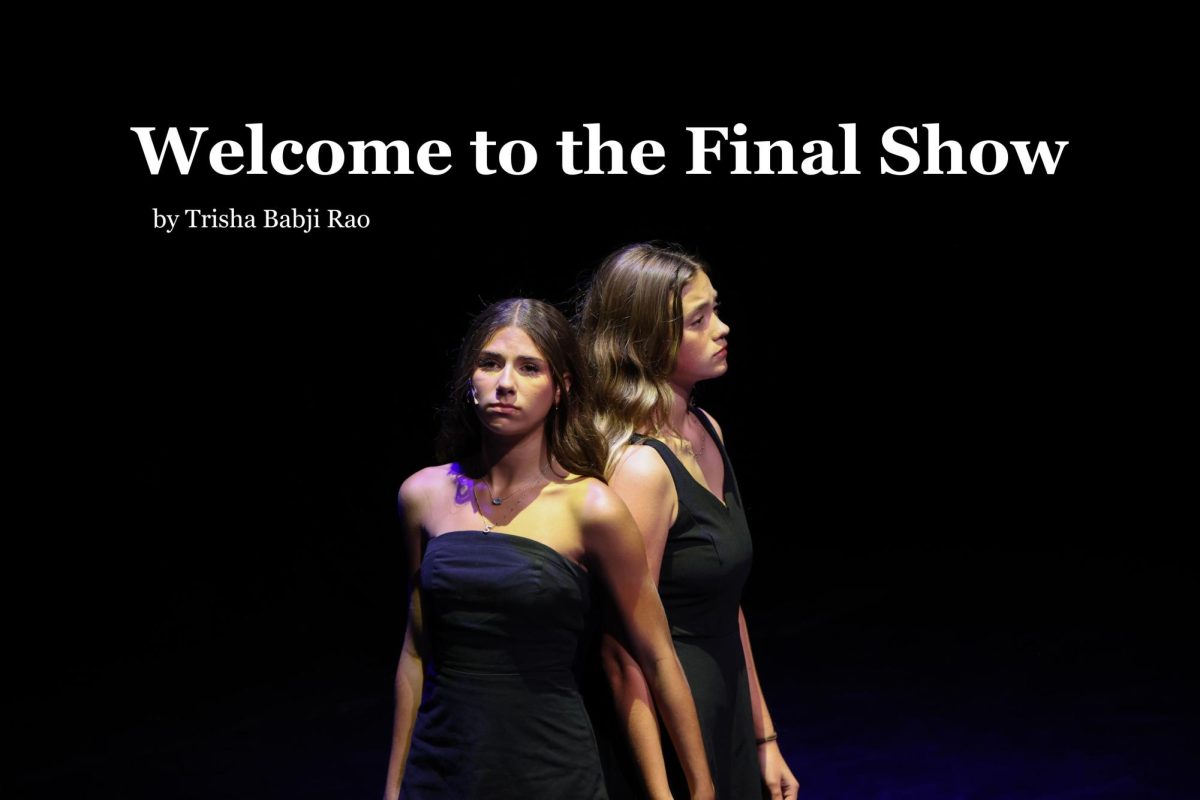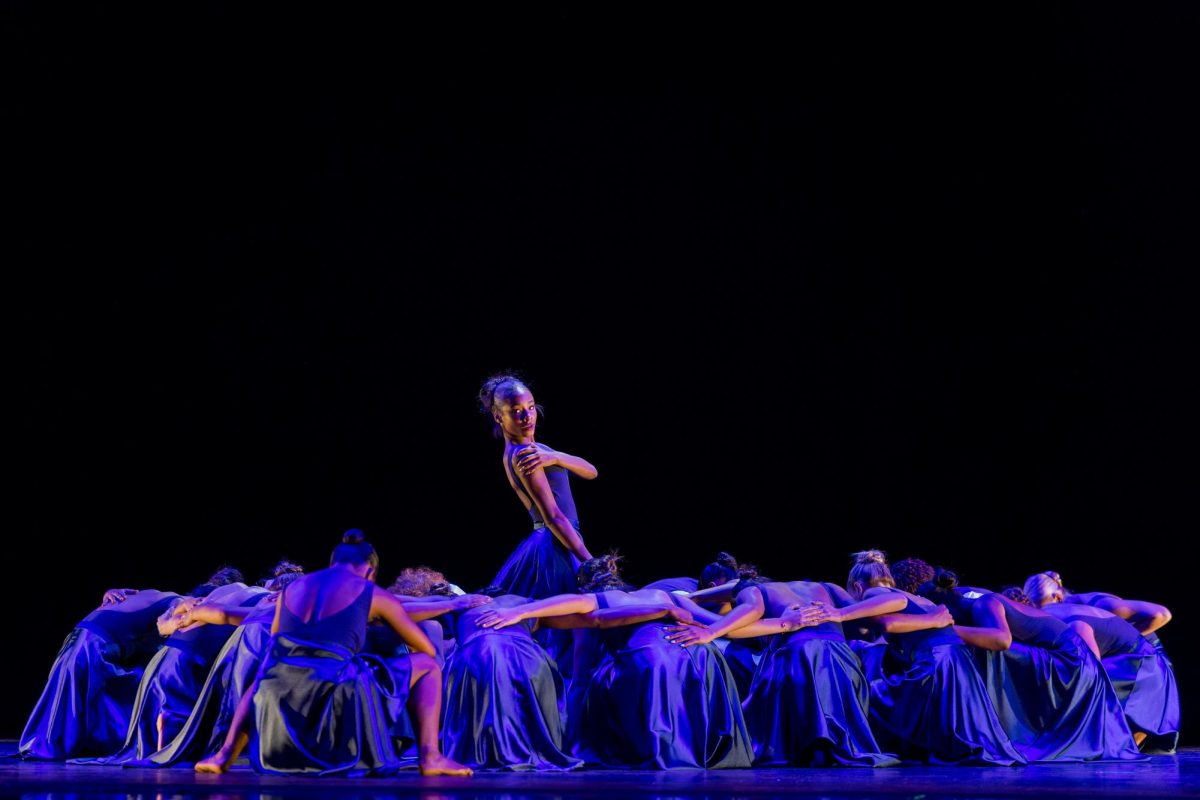Over 62,000 LEDs light up the brilliant mind of Christopher Boone as he investigates the murder of his neighbor’s dead dog as well as the mysteries within his own family.
“The Curious Incident of the Dog In the Night-time” opened Feb. 22 in Meyer Hall and continues through March 2. The plot twist-driven story began production in early December and offers a distinct perspective into the mind of an autistic 15-year-old boy.
“It’s told in a way where there’s no delineation between scenes,” theatre teacher Brad Barfield said. “It just jumps from scene to scene, and that’s sort of the way that Christopher’s mind works. It really brings us into his world in a lot more personal way.”
The cast consists of a 13-student ensemble, accompanied by a 4-month-old golden retriever and two caged rats. The cast remains on stage throughout the performance alongside Christopher to portray his thoughts.
“I have learned so much about people who have these characteristics that anybody who is ‘normal’ would not understand,” theatre sophomore Aaron Idlis said. “It’s so cool to be a part of that. It’s like these people are living these lives that you would have never otherwise known about if you weren’t to study what’s actually going on.”
Idlis was challenged with the role of Christopher, a character he found was hard to identify with. Although it is never stated directly in the show, Christopher manages the complications of autism and as a result, he excels at math but finds trouble in understanding people.
“It’s really just a play about an outsider trying to find [his] place in the world, which is a lot of what stories are about. It’s not really a different story, [it’s] just told in such a different way,” Mr. Barfield said.
Creating the world through Christopher’s eyes called for the use of 142 multicolored LED panels illuminated by over 1,700 feet of LED tape. The two-month-long creation process was spearheaded by theatre seniors Cassidy Fazio and Kelly Mclaughlan.
“The show is different from the rest because this isn’t a super big, complex set; this is more interpretive,” Mclaughlan said. “We took something that wasn’t written in the script and totally envisioned something, the game of Tetris, and brought it to life rather than building something specifically written to a script.”
The story was originally a mystery novel published in 2003 by British author Mark Haddon. It was adapted for the stage by Simon Stephens, debuting at the National Theatre in August 2012. Winning various awards, the first Broadway production debuted at the Ethel Barrymore Theatre in October 2014 and closed in September 2016. The Broadway production inspired Mr. Barfield to adapt the show for the Dreyfoos stage.
“When the play finally became available to be done by schools, I jumped at the opportunity,” Mr. Barfield said. I knew what the budget was for the big Broadway production, and then what our budget was. It was a lot of fun figuring out how to create what we wanted to create with a much more limited budget.”
On Saturday, Feb. 23, the production is offering a sensory-friendly performance for the autism development community. Organizations such as the Florida Atlantic University Center for Autism & Related Disorders have been invited to attend a performance with accommodations for anyone who may be sensitive to any form of sensory overload. The house lights are to be left on and all possibly triggering auditory and visual aspects of the show are to be put on hold. This experience allows the cast to engage with the audience directly and use their talents to better the community.
“For the actors, it’s become about more than just telling a story,” Mr. Barfield said. “It’s become about how they can connect to the people that [they] meet along the way. It’s become their story. Not my story, not even the playwright’s story, but it’s theirs and they end up making it their own to send out to the world the way they want to.”
Each student balances multiple characters to build Christopher’s community and the interactions around him. Theatre senior Lizzy Kircher plays Christopher’s mother and describes the biggest challenge as putting herself “in the shoes of the character.”
“It was hard to find similarities between me and the character, as she was much older than me dealing with very different various family relationships,” Kircher said. “The show requires not just acting but also physical movement as well, which is hard to incorporate simultaneously. It’s not just acting, but it’s teamwork and working together as an ensemble.”
As his first time in a lead role, Idilis estimates over 200 hours have been put into his performance. You can purchase tickets at the box office window one hour prior to each performance.
“It has been super stressful, but it’s all going to pay off in the end,” Idilis said. “Once I see all of the people leaving the show feeling inspired and happy, it becomes so surreal.”





















































